Why is the toilet bowl leaking
A good owner of everything should work properly, especially with regard to plumbing fixtures. Leaking in the toilet, it is certainly not a global catastrophe, but nerves can spoil pretty. As you know, uncontrolled flowing water is not the best sign, and in this case it can be taken literally, since water bills will increase significantly.
However, the question of what to do if the toilet bowl is leaking is not as complicated as it may seem at first glance.
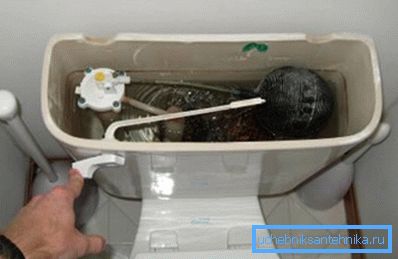
A few words about the reasons
- Immediately it should be noted that if the plumbing is new and just installed, then most likely the reason lies in the wrong assembly. But even when everything is in its place, it may just need to be slightly adjusted, which can be done quickly with your own hands.
- If within six months the toilet bowl has flowed, then it is most likely a matter of mechanical failure of the valve. Such cases are extremely rare and the reason there may be a factory marriage.
- Most often a toilet bowl flushes after 3 or more years. But here you should not despair, practice shows that in more than half of the cases it is enough to disassemble and clean the locking mechanisms, as a last resort, to replace a pair of gaskets.
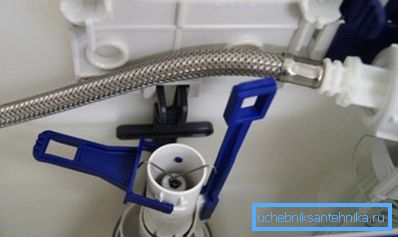
- The fact is that most modern fittings are made of plastic, which over time "grows old". Plus, the mechanisms themselves operate in the mode of constant hydraulic shock, which also increases the intensity of wear.
- When the problem has appeared, do not despair. The first thing to start with is to find out which of the blocks has failed. Fortunately, there are only two basic mechanisms. These are shut-off valves regulating the filling of the tank and the toilet mechanism.
- To begin, remove the top cover and wait until the tank is full, then turn off the water at the inlet valve. If the flow has stopped, then the reason is in the float valve. If water constantly flows into the toilet from the tank when the valve is closed, then you need to pay attention to the stop valve drain.
- It happens that water flows from under the tank to the floor, directly during the descent. In this case, the instructions for elimination will be somewhat different, but first things first.
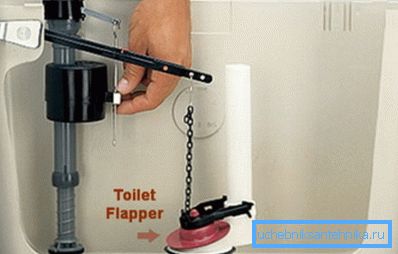
Common troubleshooting
Sank into summer times when the whole Soviet Union produced several models of valves and any plumber, knew them to the screw. Now there are more such mechanisms. But by and large, the principle of action is the same for everyone and it is not so difficult to understand.
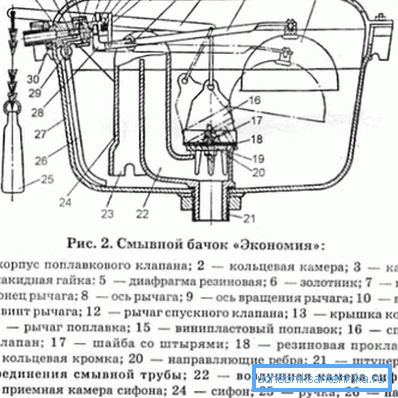
Setting the float mechanism
As mentioned earlier, often the reason that the toilet cistern is leaking is the breakdown of the shut-off float system, which is responsible for the metered water intake. In other words, the valve does not completely block the inlet, as a result, water rises above the drainage tube and through it begins to flow into the bowl.
Important: any such system is equipped with a drainage tube, it is part of the drain mechanism and is responsible for emergency dumping in the event of a breakdown. This is a vertical tube, hermetically connected to the flap and passing through the flap. As a result, the tank can only be filled to the top of the tube.
There are several ways to eliminate this trouble. Immediately, we note that the most likely reason for this is the incorrectly adjusted level of the float. The height of this unit's subheating in modern mechanisms is regulated with the help of a special rod, resembling a screw, twisting it, or vice versa, twisting the screw, the tank filling level is set.
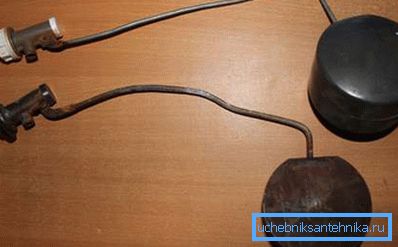
In more patriarchal, simple systems, a plastic float is used that is attached to the end of the metal knitting needle. In this case, the algorithm of actions is even simpler; the spoke should be slightly bent in the right direction.
Tip: while bending the needles, do not be too zealous. If you give this node an irregular shape, then the needle or the float itself will begin to cling to the walls or the drain mechanism of the tank. As a result, the mechanism will jam.
Unfortunately, not always the water in our systems is extremely clean. The cause of the leak can be banal debris stuck in the valve. In this case, it is sufficient to disassemble and clean the unit.

In urban high-rise buildings, overpressure in the system is quite common. In this case, the valve operates in the mode of constant hydraulic shock. Which leads to rapid wear.
To prevent this trouble is not difficult, it is enough to adjust the pressure with a valve.
Exhaust valve problems
The second most common cause is considered to be a malfunction or incorrect adjustment of the exhaust valve. The main obstacle in the path of the liquid is a pear or a special valve, which must tightly close the opening.
Over time, the pads wear out and lose their elasticity, a micro gap is formed. In this small gap and water flows from the tank to the toilet.
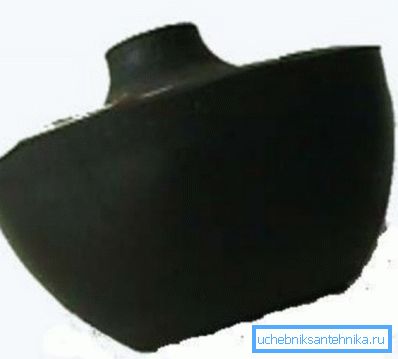
In this case, the first thing you should pay attention to is the formation of limescale on the working surfaces of the parts. Often, removing this plaque can fix the problem. Only this should be done carefully so as not to damage the elastic surface of the locking mechanism.
In a good way, of course, it is better to replace the pear itself and the so-called bed with new ones. After all, working in extreme conditions, rubber, whatever quality it is, inevitably loses its elasticity and cracks. As a result, any of your actions are only half measures, for a short while removing the new leakage.
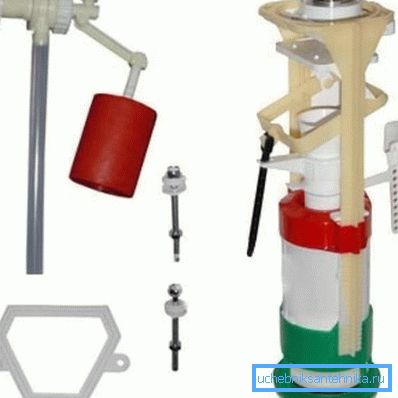
Tip: if you need to win a few days before going to the market, you can tie up a small weight, for example, a metal nut to the working stem that presses the valve.
Another reason for the constant leakage of water can be an elementary jamming of the exhaust push-button mechanism. If this is not a factory defect, then dealing with this problem is relatively not difficult. It, as a rule, arises because of a small tilt of the reinforcement mechanism relative to the central axis.
You will only need to center and fix the valve in the desired position. If this measure does not give the expected results, it is better to replace the entire unit. Currently, universal systems are being produced that can be installed on almost any tank and their price is quite reasonable.
Leak between cistern and toilet
Oddly enough, but this also happens. You all beautifully collected, the instruction is executed clearly, to the last letter. But during the drain, between the cistern and the toilet, a stream of water flows out.
Do not despair, most likely, you have not reached the fastening bolts a bit. The cuff is not firmly seated and fluid is seeping through it.

Tip: it is better to twist plastic sheaves by hand, without keys and pliers. These parts are quite fragile and if they are squeezed, they can burst.
Everything is much sadder if such a leak manifested itself on a well-established, long-used unit. This suggests that the rubber pads "zadubeli" and came into disrepair, they only need to be changed. When installing, do not forget to lubricate all joints with silicone or similar sealant.
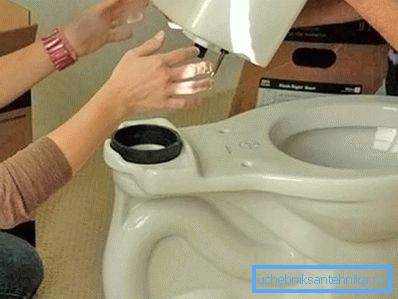
In the case when the tank is simple, constantly flows past the toilet. The root of the problem should be sought in mounting studs. They can be plastic or metal.
On plastic, it is enough to replace the sealing gaskets. Metal, due to corrosion, often has to be completely replaced.
The video in this article shows the subtleties of repairing the toilet bowl.
Conclusion
As you can see, there is nothing difficult in solving this problem. The toilet is not a spaceship and in most cases it can be repaired with your own hands.
